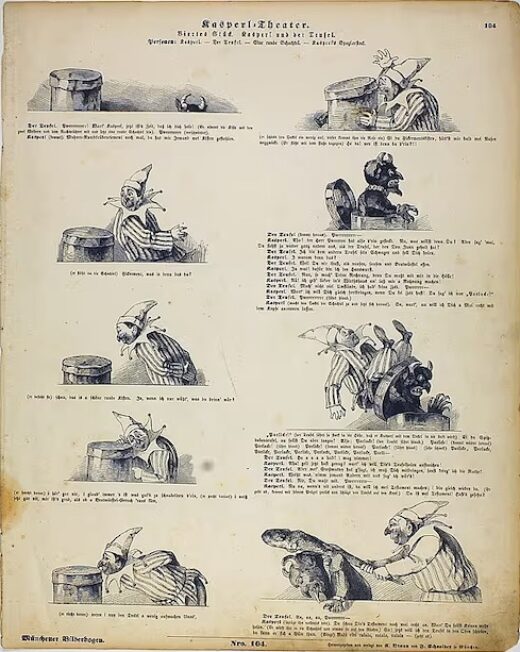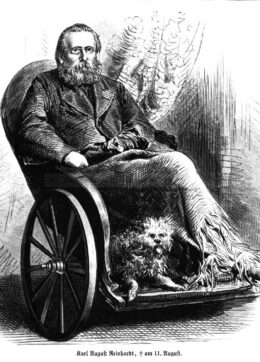
Printed
11 pages
Author(s)
Kasperl und der Teufel
In 1852 Carl Reinhardt published a series of pieces for Kasperl to accompany the illustrated plates he was publishing in the Münchner Bilderbogen. The text, written by an unknown author, thus serves primarily as a caption for a graphic work that made Reinhardt the father of the comic strip in Germany, and was certainly not intended to be performed on stage. Nevertheless, these short sketches reproduce typical scenes and routines from the puppet repertoire of the time. Here Kasperl fights the devil, as a worthy “cousin” of Punch: to make him appear or disappear, he uses the magic formula 'Parlicke', learned from the version of Faust published by Karl Simrock in 1846. The character is characterised as a scoundrel and a drunkard; he identifies himself with Hanswurst. This playlet initiates a solution of continuity between the plays published by Carl Reinhardt by explicitly following Kasperl und Don Juan and Frau Kasperl und die Köchin.
The hero triumphs over the devil
The devil steals the box in which Kasperl, in the previous play (Frau Kasperl und die Köchin) had locked his wife, his lover and the night watchman. He replaces it with another box in which Kasperl almost gets his nose stuck when he comes to sniff if it does not contain sausages. Instead, the devil emerges and wants to take him away. But Kasperl has fun making him disappear and reappear with the magic formula "Parlucke! Parlicke" until the devil gets dizzy and cries for mercy. He insists that Kasperl follow him, who finally announces that he is going to draw his will and returns with a club, with which he kills the devil. He seals him up in the box and goes to throw it in the fire.
Publications and translations
Carl Reinhardt, Das wahrhaftige Kasperltheater, Münchner Bilderbogen, 1852
Louis Lemercier de Neuville, Histoire anecdotique du théâtre de marionnettes. Paris: Calmann-Lévy, 1892, p.60-63.
(French)
